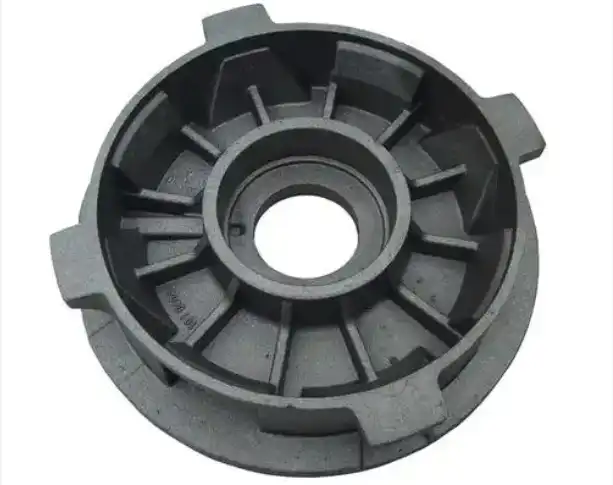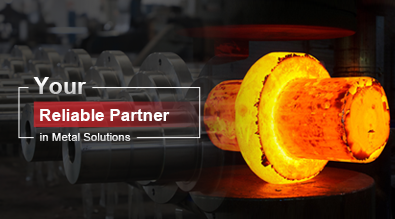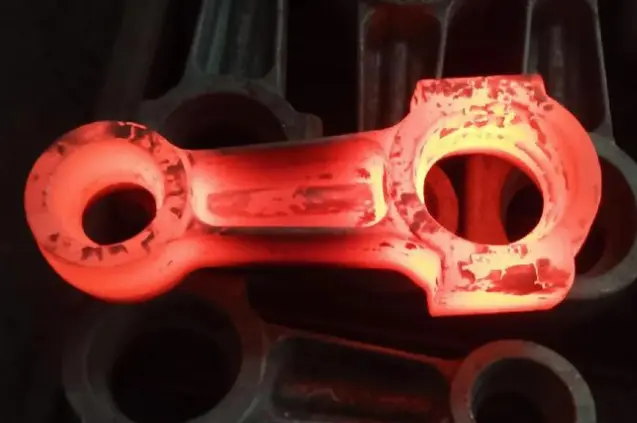What is the advantage of sand casting
Sand casting is a versatile and widely used manufacturing process that offers numerous advantages in the production of metal components. This ancient yet highly effective technique involves pouring molten metal into a sand mold, allowing it to solidify, and then breaking away the sand to reveal the finished product. The process has been refined over centuries and continues to be a cornerstone of modern manufacturing due to its flexibility, cost-effectiveness, and ability to produce complex shapes. In this blog, we'll explore the various advantages of sand casting, from its adaptability to different metals and alloy types to its suitability for both small and large-scale production runs. We'll delve into how sand casting enables manufacturers to create intricate designs, achieve excellent surface finishes, and maintain tight tolerances while keeping production costs relatively low. Additionally, we'll discuss how this method compares to other casting processes and why it remains a preferred choice for many industries, including automotive, aerospace, and machinery manufacturing.

What Are the Key Benefits of Sand Casting in Manufacturing?
Cost-Effectiveness and Versatility
Sand casting offers significant cost advantages, particularly for small to medium production runs. The process requires relatively inexpensive materials and equipment compared to other casting methods, making it an economical choice for many manufacturers. The versatility of sand casting is evident in its ability to work with a wide range of metals and alloys, including iron, steel, aluminum, brass, and bronze. This flexibility allows manufacturers to produce diverse components without the need for substantial retooling or equipment changes. Additionally, sand casting can accommodate parts of various sizes, from small intricate components to large, heavy castings weighing several tons. The reusability of sand in the molding process further contributes to its cost-effectiveness, as the same sand can be recycled multiple times, reducing material waste and environmental impact.
Ability to Produce Complex Shapes
One of the most significant advantages of sand casting is its capability to create complex geometries and intricate details. The malleability of sand allows for the formation of molds with sophisticated internal cavities and external features that would be challenging or impossible to achieve with other manufacturing methods. This makes sand casting ideal for producing components with intricate designs, undercuts, and hollow sections. The process can accommodate various core designs, enabling the creation of internal passages and cavities within the cast part. This level of complexity is particularly valuable in industries such as automotive and aerospace, where components often require intricate internal structures for cooling or weight reduction. Furthermore, sand casting allows for the integration of multiple features into a single casting, potentially reducing the need for additional assembly or machining steps in the production process.
Scalability and Rapid Prototyping
Sand casting offers excellent scalability, making it suitable for both small-batch production and high-volume manufacturing. The process can be easily adapted to meet varying production demands without significant changes to the manufacturing setup. This scalability is particularly advantageous for businesses that experience fluctuating order volumes or need to produce a wide range of parts. Additionally, sand casting is well-suited for rapid prototyping and product development. The relatively quick turnaround time for creating sand molds allows manufacturers to produce prototype parts efficiently, enabling faster design iterations and reducing time-to-market for new products. This rapid prototyping capability is especially valuable in industries where product development cycles are short, and the ability to quickly test and refine designs is crucial for maintaining a competitive edge.
How Does Sand Casting Compare to Other Casting Methods?
Advantages Over Die Casting
Sand casting offers several advantages over die casting, particularly when it comes to the production of larger parts and the use of a wider range of metals. Unlike die casting, which is limited to non-ferrous metals with lower melting points, sand casting can work with virtually any metal or alloy, including high-temperature materials like steel and iron. This versatility makes sand casting a preferred choice for industries requiring components made from diverse materials. Additionally, sand casting allows for the production of much larger parts than die casting, which is typically limited by the size of the die casting machine. The lower tooling costs associated with sand casting also make it more economical for smaller production runs or when frequent design changes are anticipated, as modifying a sand mold is generally less expensive than altering a metal die.
Benefits Compared to Investment Casting
While investment casting is known for its ability to produce parts with excellent surface finish and tight tolerances, sand casting offers its own set of advantages in comparison. Sand casting typically has lower setup and production costs, making it more suitable for larger components and higher volume production runs. The process also allows for faster production cycles, as creating and preparing sand molds is generally quicker than the multi-step process required for investment casting. Sand casting can accommodate larger and heavier parts more easily than investment casting, which is often limited by the size and weight constraints of the ceramic shell molds used. Furthermore, sand casting offers greater flexibility in terms of mold modification and iteration, allowing for quicker adjustments to part designs during the production process.
Superiority to Permanent Mold Casting
Sand casting demonstrates several advantages over permanent mold casting, particularly in terms of design flexibility and initial tooling costs. While permanent mold casting uses metal molds that can produce parts with good surface finish and dimensional accuracy, it is limited in the complexity of shapes it can produce. Sand casting, on the other hand, allows for greater design freedom and the ability to create more intricate geometries. The initial tooling costs for sand casting are significantly lower than those for permanent mold casting, making it a more attractive option for smaller production runs or when frequent design changes are anticipated. Sand casting also offers greater flexibility in terms of part size and weight, as it is not constrained by the limitations of a fixed metal mold. This makes sand casting particularly suitable for producing large, complex components that would be impractical or impossible to manufacture using permanent mold casting techniques.
What Are the Environmental Considerations of Sand Casting?
Recyclability of Materials
Sand casting demonstrates strong environmental credentials through its high level of material recyclability. The sand used in the molding process can be reclaimed and reused multiple times, significantly reducing waste and the need for new raw materials. Modern sand reclamation systems can recover up to 95% of the sand used in casting, making the process highly efficient in terms of resource utilization. The metals used in sand casting are also fully recyclable, with many foundries incorporating recycled metal into their production processes. This circular approach to material usage not only reduces the environmental impact of sand casting but also contributes to lower production costs. Additionally, the ability to recycle and reuse materials aligns well with increasingly stringent environmental regulations and growing corporate sustainability initiatives across various industries.
Energy Efficiency Considerations
While sand casting does require significant energy input, particularly for melting metals, it can be considered relatively energy-efficient when compared to some other manufacturing processes. The energy efficiency of sand casting can be optimized through various means, such as using high-efficiency furnaces, implementing heat recovery systems, and optimizing the melting and pouring processes. Modern foundries are increasingly adopting energy-saving technologies and practices to reduce their overall energy consumption and carbon footprint. Furthermore, the ability of sand casting to produce near-net-shape components often reduces the need for extensive machining and finishing operations, which can be energy-intensive processes. This aspect of sand casting contributes to overall energy savings in the production of metal components, especially when considering the entire lifecycle of the manufacturing process.
Emissions and Waste Management
Sand casting, like any industrial process, does produce emissions and waste that require careful management. The primary environmental concerns include dust from sand handling, emissions from metal melting, and the disposal of used sand and binders. However, modern foundries have implemented various technologies and practices to mitigate these environmental impacts. Advanced dust collection systems and filtration technologies help control particulate emissions, while efficient furnace designs and proper metal handling procedures minimize harmful fumes. The development of eco-friendly binders and the implementation of sand reclamation systems have significantly reduced the amount of waste sand sent to landfills. Many foundries now operate closed-loop systems that minimize waste and emissions, adhering to strict environmental regulations. Additionally, the increasing use of simulation software in sand casting helps optimize mold design and reduce material waste, further enhancing the environmental performance of the process.
Conclusion
Sand casting remains a vital and advantageous manufacturing process, offering a unique combination of versatility, cost-effectiveness, and design flexibility. Its ability to produce complex shapes, accommodate a wide range of metals, and scale from small to large production runs makes it indispensable in various industries. While facing competition from newer technologies, sand casting continues to evolve, incorporating advanced materials, automation, and environmental considerations. As manufacturers seek efficient, flexible, and sustainable production methods, sand casting's advantages position it as a enduring and valuable technique in the modern manufacturing landscape. Its balance of traditional craftsmanship and technological innovation ensures its relevance in meeting the diverse needs of today's manufacturing challenges.
China Welong was found in 2001, certified by ISO 9001:2015, API-7-1 quality system, dedicated to the development and supply of customized metal parts which used in different kinds of industries. Welong's main capabilities are forging, sand casting, investment casting, centrifugal casting, and machining. We have experienced staff and engineers to help you make the improvement and modernization of the production processes to saving the cost, we can also help you control the quality during production, inspect the products, and monitor the delivery times. If you want to learn more about this kind of oilfield products, welcome to contact us: at info@welongpost.com.
References
1. Brown, J. R. (2017). Foseco Ferrous Foundryman's Handbook. Butterworth-Heinemann.
2. Beeley, P. (2001). Foundry Technology. Butterworth-Heinemann.
3. Jain, P. L. (2003). Principles of Foundry Technology. Tata McGraw-Hill Education.
4. Campbell, J. (2015). Complete Casting Handbook: Metal Casting Processes, Metallurgy, Techniques and Design. Butterworth-Heinemann.
5. American Foundry Society. (2019). AFS Transactions: Sand Casting Innovations and Applications. AFS.
6. Groover, M. P. (2010). Fundamentals of Modern Manufacturing: Materials, Processes, and Systems. John Wiley & Sons.

Share your inquiry, get the quotation accordingly!

China WELONG- Your Reliable Partner in Metal Solutions

